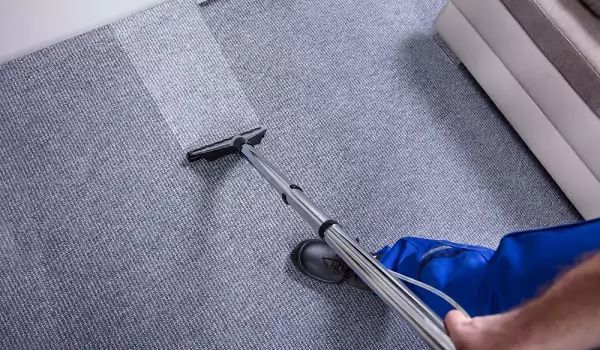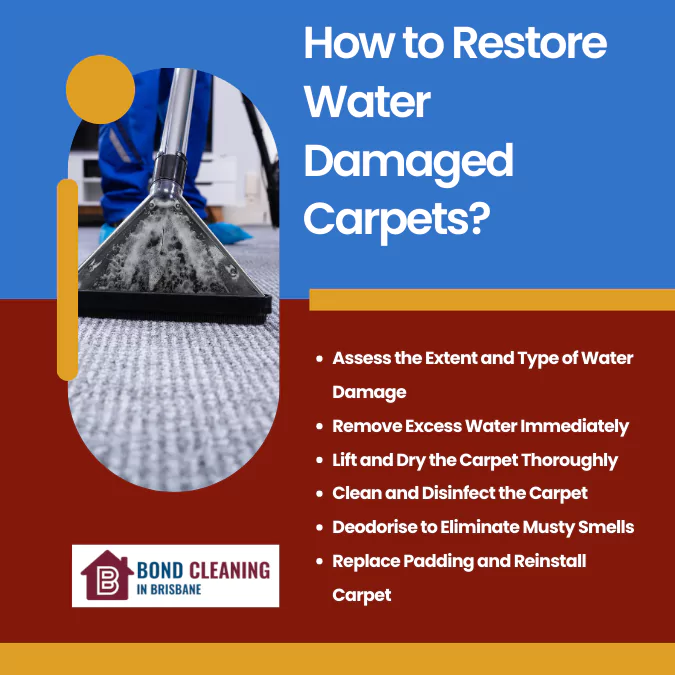How To Restore Water Damaged Carpets: A Step By Step Process
You walk into your living room and feel it—squish. That sinking feeling follows as you realise your once cosy carpet is now a soggy mess. Whether it’s a minor leak, burst pipes, heavy rains, or even an overflowing sink can leave your carpet soaked and your nerves frayed. Overlooking water damage on your carpet can welcome mould and bacteria into your home. That’s why prompt action is necessary. But do not panic. With proper measures, it is very much possible to revive your carpet and avoid mould, odour and permanent damage.
This article contains a very detailed, step by step guide to fixing water damaged carpets, from the identification of the type of water to the final stages of cleaning and disinfection. By following these steps meticulously, homeowners can save money on replacements as well as have a safe and sanitary living environment. To meet the area’s inspection requirements, professional bond cleaning Brisbane services require thorough repair and cleanliness.
Hide
Show
1. Assess the Extent and Type of Water Damage
Before starting with the restoration process, it’s crucial to evaluate the extent of damage. Determine whether the water is clean (from rain or pipes), grey (from appliances), or black (from contaminated water such as sewage). Clean water damage can readily be handled at home, however grey or black water typically necessitates expert assistance due to health risks.
Check how far the water has spread—whether it’s limited to one area or has soaked into walls and underlay. Early assessment helps in planning the appropriate cleaning method and gauging whether the carpet can be salvaged in the first place.
2. Remove Excess Water Immediately

Time is of the essence when dealing with water-damaged carpets. The longer the moisture stays, the higher the chances of mould growth and irreversible damage. Use a wet vacuum or water extraction machine to remove as much water as possible. These can typically be hired out at hardware stores all over Brisbane and are simple to use with minimal effort.
If you are in the process of vacating and facing such issues, professional services like experienced Bond Cleaning Brisbane can assist not just with carpet restoration but also with complete clean-up, which is often needed for bond return.
3. Lift and Dry the Carpet Thoroughly
Once the excess water is removed, lift the carpet carefully to allow air to circulate underneath. Remove the carpet padding if it’s soaked—it usually needs replacement. Use fans, dehumidifiers, and open windows to encourage ventilation and speed up drying.
Avoid direct heat from heaters as it can shrink or damage the carpet fibres. Depending on the weather and the severity of the water damage, drying could take anywhere from 24 to 72 hours. Patience is important during this stage, as premature steps might ruin all your efforts.
4. Clean and Disinfect the Carpet
After the carpet is dry, cleaning and disinfecting are vital. Start by vacuuming the entire area to remove dirt and debris. Then, use a carpet shampoo or a mild detergent mixed with water to clean the fibres. Scrub carefully with a gentle brush or sponge.
Disinfecting is especially critical when the water is murky or dark. You can use a water and white vinegar mix or commercial carpet disinfectants. This process helps to eradicate bacteria, allergies and odours. A deep clean by experts such as diligent Bond Cleaning Brisbane will guarantee carpets meet the rental inspection standards for individuals preparing to vacate soon.
5. Deodorise to Eliminate Musty Smells
Even when fully dried and sanitised, carpets tend to retain the damp or mouldy odours. To deal with this, sprinkle baking soda liberally on the affected area and leave it overnight. Baking soda itself absorbs smells and wetness naturally. The following day, thoroughly vacuum the area.
Alternatively, commercial deodorising carpet sprays or essential oil sprays can provide a clean, fresh smell. Just make sure the products employed are safe for your particular type of carpet. Regular airing helps keep the air smelling fresh too and stops stale smells from clinging.
6. Replace Padding and Reinstall Carpet
Once you are confident the carpet is completely clean and dry, replace the underlay or padding if it was removed. Roll the carpet back into place in a manner that no creases and loose edges are seen. You can use a knee kicker for this section to help you stretch the carpet evenly and cover the entire floor.
Conducting this step can be professional in nature, especially if you’re working on a large expanse of carpet or if you’re handling wall to wall installations. For tenants getting ready to leave, professional reinstallation can be a crucial part of fulfilling the demands of your landlord.
7. Inspect for Mould and Monitor Regularly
The job isn’t done once the carpet is reinstalled. Keep an eye out for signs of mould or mildew over the next few weeks. Discolouration, musty smells, or worsening allergies may be indicators of hidden issues. If mould reappears, it’s crucial to consult a specialist immediately.
Regular monitoring ensures long term safety and maintains the indoor air quality of your home. You may also consider treating the carpet with anti-mould sprays to prevent future growth.
How to Restore Water Damaged Carpets?

Wrapping up
Restoring water damaged carpets may appear to be a difficult task. However, by rapidly removing the water, drying fully, cleaning correctly and being attentive for mould, you can return your carpet to near new condition without having to replace it completely. Try the aforementioned techniques today to restore your carpets to their former brilliance. Happy cleaning!


